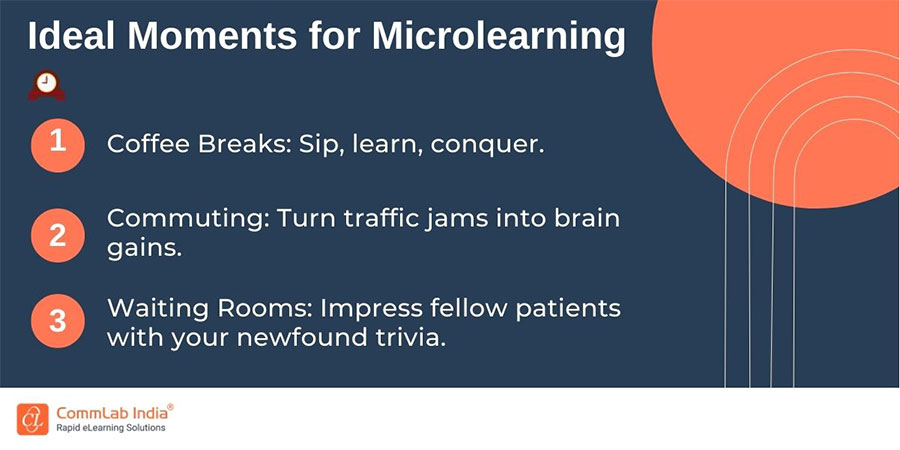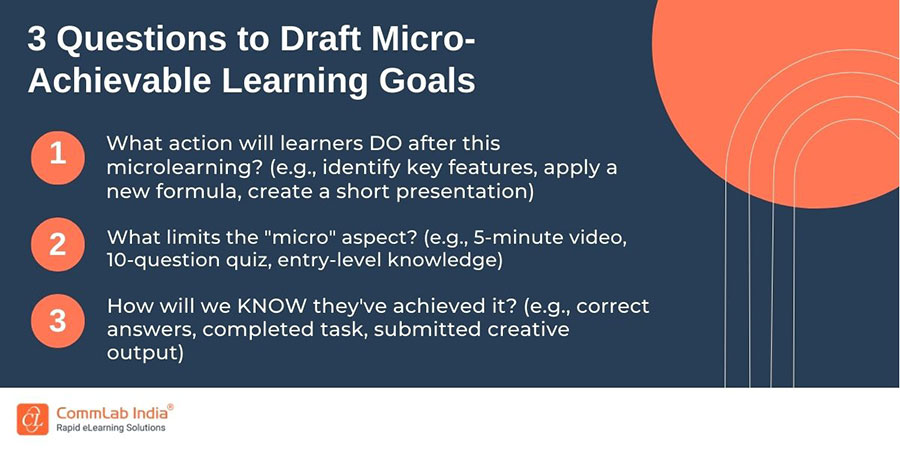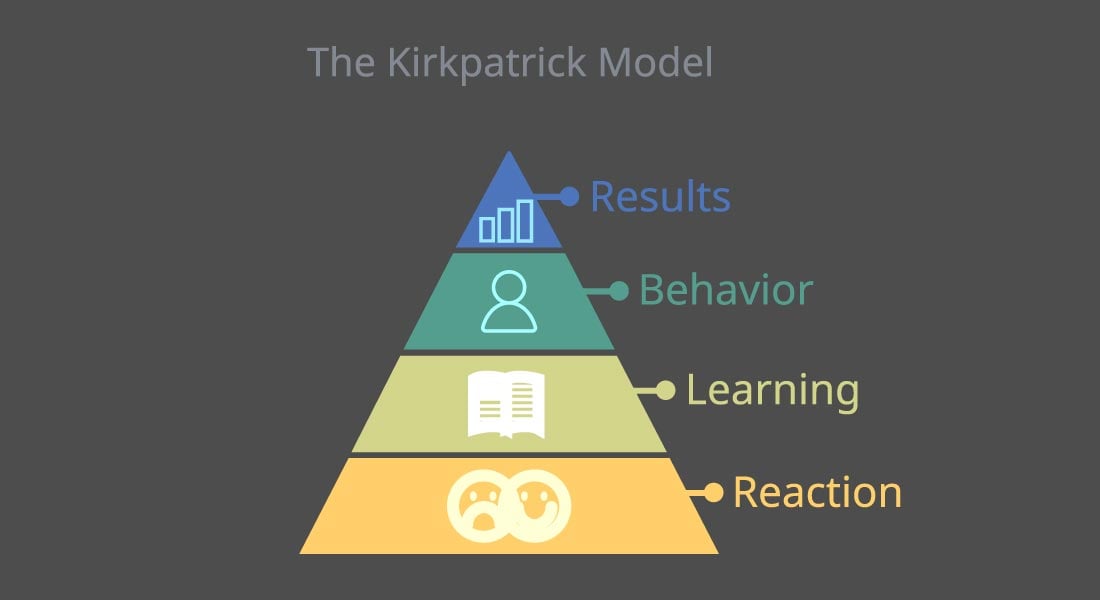Microlearning Deployment: What Training Managers Need to Know?
Training managers! Ready to implement microlearning in corporate training? Here are key insights you need to know...

Microlearning's popularity is undeniable. Bite-sized chunks of easily digestible information are perfect for our fast-paced lives and shrinking attention spans. But as a training manager, before hopping on this trendy train, understanding microlearning's true potential and limitations is crucial.
What Is Microlearning?
Imagine a learning nugget that fits neatly into your coffee break. That’s microlearning – three to five minutes of wisdom, served with a side of “Aha!” moments.
🚀 Why Microlearning Rocks?
- Laser-Targeted Awesomeness: Each module focuses on a single learning objective. No fluff, no filler. Just the relevant stuff.
- Just-in-Time Learning: Forget hour-long snoozefests. Microlearning swoops in when you need it – like Batman with a pocket-sized utility belt.
- No More Brain Overload: Ever tried fitting an elephant into a matchbox? That’s what traditional courses feel like. Microlearning? It’s the matchbox – compact, efficient, and zero cognitive indigestion.
This guide discusses key insights that training managers should be aware of before deploying microlearning:
Microlearning Deployment: What Training Managers Need to Know?
1. Microlearning is a Targeted Tool, Not a Magic Wand!
While microlearning shines in specific situations, it's not a universal solution. Complex skill development or in-depth knowledge acquisition still require comprehensive approaches. Identify where microlearning truly integrates best:
- Onboarding: Instead of overwhelming new hires with information overload, introduce basic processes, tools, and company culture through bite-sized, engaging microlearning modules. This eases them into their roles and sets them up for success.
- Performance Support: Forget bulky manuals! Offer quick refresher knowledge just-in-time through microlearning. Short, targeted modules on specific procedures or troubleshooting steps equip employees to handle situations immediately, improving efficiency and performance.
- Skills Reinforcement: Keep key skills sharp and top-of-mind with short, engaging practice exercises delivered through microlearning. A few minutes daily spent practicing vital skills through interactive modules leads to better retention and application in real-world scenarios.
- Compliance Updates: Ensure everyone stays compliant with ever-changing regulations and policies by delivering essential updates in digestible doses through microlearning. Short, impactful modules highlighting key changes and best practices keep your workforce informed and compliant.

2. Learning Objectives are the North Star
Don't get lost in the "micro" excitement. Before creating any content, start with clear and specific learning objectives. What knowledge, skills, or attitudes do you want learners to gain? Break down these broader goals into achievable micro-achievements. Each microlearning nugget should contribute to the overall learning journey, ensuring a focused and impactful experience.
3. Content is King (and Queen, and Prince, and Jester)
Engaging content is the lifeblood of successful microlearning. Opt for variety to keep learners hooked. Utilize the power of video demonstrations, interactive simulations, gamified elements, infographics, and bite-sized podcasts to deliver information in a visually appealing and interactive way. Remember, micro doesn't mean low quality. Invest in high-quality content that resonates with your learners and leaves a lasting impact.
The Microlearning Toolbox: 🔧 Tools of the Trade
- Video Bites: Snackable videos that make YouTube jealous.
- Flashcards: Because who doesn’t love a good digital index card?
- Interactive PDFs: Like regular PDFs, but with a dash of pizzazz.
- Mini Quizzes: Test your knowledge, one bite at a time.
- Infographics: Because data deserves to be pretty.
→ Sign-Up Now: Microlearning Training Challenges [Webinar]
4. Sequencing: Building a Coherent Learning Journey
Now that your individual modules are polished, don't just dump them into your LMS. The sequencing of these modules is crucial for creating a meaningful learning experience.
Here are some key points to remember when sequencing microlearning modules:
- Start with the Foundation: Begin with modules that introduce core concepts and principles. Laying this essential groundwork allows learners to grasp more complex topics presented later.
- Build in Logical Progression: Arrange modules in a way that builds upon each other.
5. Technology: Your Essential Ally
Don't let delivery become a hurdle. Choose a learning management system (LMS) that seamlessly integrates microlearning. It should offer ease of access, mobile compatibility, offline learning options, tracking capabilities, and comprehensive reporting tools. Streamline the learning experience and gain valuable insights into learner engagement and progress.
Know more about LMS [Watch Video]
6. Measurement Matters: Data Tells the Story
Launching and forgetting is a recipe for mediocrity. Evaluate the effectiveness of your microlearning initiatives. Track completion rates, knowledge gained through pre- and post-assessments, and most importantly, performance improvement in the workplace. Use data to refine your approach, iterate on existing modules, and measure the return on investment your microlearning programs deliver.
7. Promote and Encourage: Building a Learning Culture
Don't expect learners to magically stumble upon your microlearning treasures. Proactively promote them through regular communication channels, integrate them into employee workflows, and leverage social learning opportunities through discussion forums and leaderboards. Gamification elements can further incentivize participation and create a culture of continuous learning.
8. Sustainability: The Gift that Keeps on Giving
Microlearning is a long-term commitment, not a short-term fix. Plan for ongoing content creation and expansion. Regularly update modules with fresh information and adapt to changing needs. Ensure your microlearning library stays relevant, engaging, and addresses the evolving learning needs of your workforce.
Wrapping Up
And that’s a wrap but before saying bye, we would like to share - microlearning is a powerful tool when used strategically. As a training manager, wield it wisely, and you'll unlock a world of engaging, impactful learning experiences that empower your team to achieve their full potential.
Bonus Tip: Consider a blended approach. Combine microlearning with other training methods like workshops, mentoring, or instructor-led sessions for a well-rounded learning experience. Microlearning can serve as a foundation, while other methods delve deeper into specific topics or provide opportunities for hands-on practice.
Want to implement microlearning in your training strategy? Be informed of the challenges in the way, sign-up for our upcoming webinar and let experts guide you:






